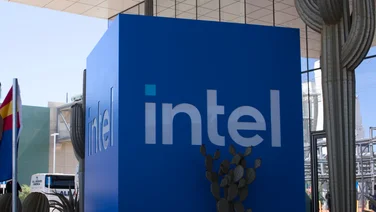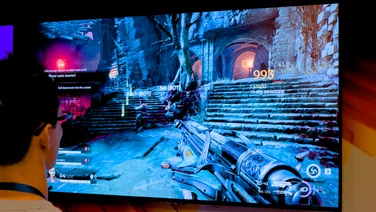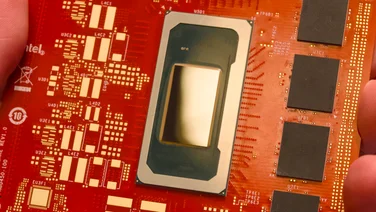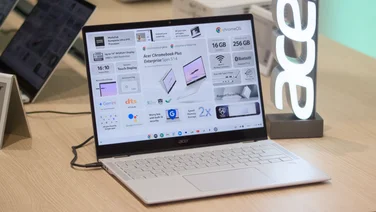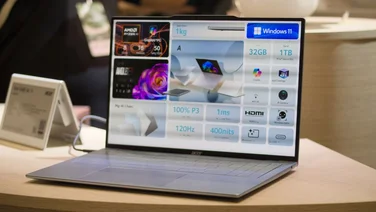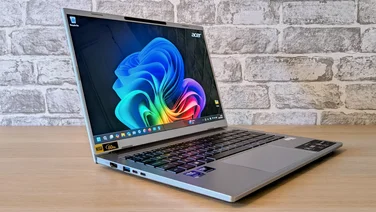To help us provide you with free impartial advice, we may earn a commission if you buy through links on our site. Learn more





Ultrabooks were undeniably an expensive luxury when they first appeared last year, but they are gradually coming down in price. With more people willing to buy one, Sony has finally decided to enter the ring with its first Ultrabook, the VAIO T13. It’s a mid-range machine with a mechanical hard disk and previous generation Sandy Bridge processor, but don’t let that put you off – you can pick one up for a very reasonable £680.

First impressions are very positive – Sony’s signature VAIO styling looks very sleek, and in this 18mm thick chassis you’d be hard pushed to separate it from the much more expensive VAIO Z series. It’s built from plastic rather than metal, with the brushed aluminium lid being the one exception. There are few signs of flex in the main body, but there’s much more give in the screen.
The display is a 13.3in panel with a fairly standard 1,366×768 resolution. Brightness can be set to a very high level, and the glossy display makes colours appear bright and vibrant, but we still found light reflections quite troublesome. Thankfully there’s a large amount of screen tilt, although the viewing angles from the TN panel are average at best.

Once we’d found a workable viewing angle, we had no problems working on the T13 thanks to its spacious Chiclet-style keyboard. There’s not a lot of travel in the keys, but they spring back instantly, giving you plenty of feedback when typing. You don’t get a numeric keypad, and there’s no backlight, but the full-size keys are still a pleasure to use.

Sony has also done a great job with the all-in-one touchpad – we don’t normally like these designs, preferring physical buttons, but the multi-touch gestures make it much easier to use than the touchpads from other manufacturers we’ve used in the past. A two-finger tap will right-click, so you don’t even need to press down on the pad to access context menus. The touchpad is more than large enough to span the entire desktop in a single swipe, thanks to the widescreen layout that matches the laptop’s display.
The laptop’s application performance was distinctly average, due to its entry-level Intel Core i3-2367M processor. This runs at 1.4GHz and doesn’t support Turbo Boost for extra performance, although it does have the benefit of Hyper-Threading. The laptop still struggled in our multimedia benchmarks, managing just 29 overall, although you should still be able to use most desktop applications, including image editors and word processors, smoothly. Multitasking shouldn’t slow the system down, thanks to 4GB of RAM.
As we’ve come to expect from Intel’s HD 3000 integrated graphics, gaming is mostly out of the question unless you lower all the detail settings and resolution. Our Dirt 3 test could only manage 12.3fps, suggesting that trying to play newer games will result in a jerky slideshow. High definition video playback is perfectly smooth, however, whether you play it directly on the laptop at 720p or on an external display at Full HD resolution.

A large benefit of integrated graphics is improved battery life, and the T13 doesn’t disappoint. Sticking to basic tasks such as word processing and web browsing should mean you’ll be able to work for a full day without having to worry about running out of battery – in our light use test, the T13 managed a lengthy seven and a half hours .
The T13 isn’t perfect – connectivity is unsurprisingly rather limited. You only get two USB ports, although one is a faster USB 3 version, a 3.5mm headset audio jack and a multi-format card reader. VGA and HDMI video outputs are a welcome inclusion, as is the full-size Ethernet port, but if you’re using the T13 at a desk you may need to invest in a USB hub to connect all your peripherals.

As one of the cheapest Ultrabooks around, the T13 looks like great value. It might lack the power of a similarly priced 15in model, but if portability is a real concern you get plenty for your money here. The previous generation processor can even be upgraded to a newer Ivy Bridge model, bringing improved battery life, desktop and gaming performance, for an extra £100. Its screen isn’t the best and connectivity could be better, but the Sony VAIO T13 is still a very attractive laptop.

